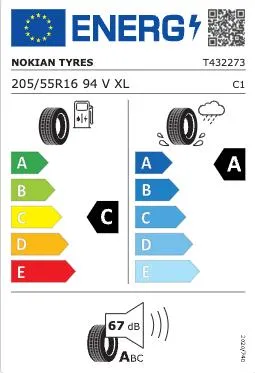Do your car's tires have enough tread depth for the fall rains?
The condition of tires is crucial in preventing hydroplaning on wet roads in the fall. Adequate tread depth is important, with the legal minimum being 1.6 mm for summer tires and 3.0 mm for winter tires. However, it is recommended that the tread on summer tires be at least 3.5 mm and on winter tires 4.5 mm. Sufficient tread depth helps the tire effectively channel water away from the road surface.
Tire Condition and Hydroplaning: Autumn Challenges
As autumn arrives, roads are often wet and slippery, significantly increasing the risk of hydroplaning. Hydroplaning occurs when tires can no longer channel water away from the contact surface with the road, resulting in a loss of vehicle control. The condition of the tires plays a crucial role in avoiding this dangerous situation.
Why Is Tire Condition Important for Preventing Hydroplaning?
The tread depth and overall condition of tires directly affect how efficiently they can channel water away while driving. The tread grooves act as channels to remove water from beneath the tire, thereby preventing hydroplaning. If the tread depth is too shallow, water cannot escape quickly enough, causing the tire to rise onto a layer of water, effectively separating it from the road surface and losing traction. According to the law, the minimum tread depth for summer tires is 1.6 mm, but in autumn conditions, it is recommended that the tread depth be at least 3.5 mm. Deeper grooves help channel larger amounts of water away from the tire, significantly reducing the risk of hydroplaning.
Age and Condition of the Tires
While tread depth is important, the age and overall condition of tires are also crucial. Tires that are over 5-6 years old begin to lose their elasticity, and their rubber compound hardens, which diminishes grip on wet roads. Such tires are not as effective in preventing hydroplaning as newer, more flexible ones.
The Importance of Tire Pressure
Correct tire pressure is essential for optimal tire performance. Too low a pressure increases the risk of hydroplaning because the tire’s contact area with the road increases, preventing efficient water evacuation. Regularly check your tire pressures and ensure they meet the manufacturer’s recommendations.
How Can You Avoid Hydroplaning?
1. Maintain your tires: Ensure that the tread depth is sufficient and that the tires are in good condition. Replace old and worn tires with new ones before the autumn rains start.
2. Check tire pressures: Keep tire pressure correct to ensure they perform best even in wet conditions.
3. Drive cautiously: Avoid hard accelerations and braking on wet roads. Maintain a reasonable speed and increase the distance between your vehicle and others.
4. Choose tires carefully: When purchasing new tires, select ones with good hydroplaning-resistant tread patterns. You can easily check this on the tire's EU Label, as shown in the image below with an example product featuring A-class wet grip performance.

Summary
The rainy autumn weather increases the risk of hydroplaning, and tire condition is one of the most critical factors in preventing it. Ensure your tires are in good condition, paying special attention to tread depth and correct pressure. Well-maintained tires not only improve driving safety but can also prevent dangerous road situations like hydroplaning. By taking care of your tires, you can enjoy the autumn driving experience with peace of mind, even when the roads are wet and slippery.
